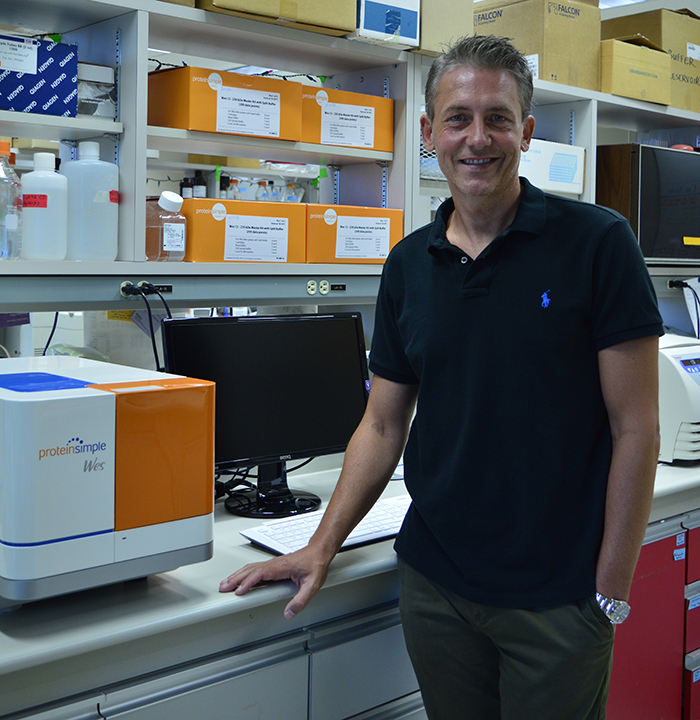
Jason Dyck, professor in the Division of Pediatric Cardiology and director of the Faculty of Medicine & Dentistry's Cardiovascular Research Centre, is one of 30 UAlberta researchers sharing $19.2 million in 2018 CIHR project grants.
Doctors are usually very good at keeping people alive after a heart attack, but those patients often go on to develop heart failure-when the heart can't pump enough blood to meet the demands of the other organs. One of the factors that may impact the heart's ability to keep up is the amount of fat that accumulates in the heart cells, especially if that fat is not burned for energy. This accumulation of fat is dangerous and has shown to lead to poor heart function and heart failure.
In this Q & A, Canadian Research Chair in Molecular Medicine Jason Dyck, explains how his new Canadian Institutes of Health Research (CIHR) funding will help his team find out whether limiting the amount of fat that goes to the heart in the first place is beneficial or detrimental to long-term heart function.
Does a healthy heart have fat in it?
Believe it or not, a healthy heart relies on fat.
The heart maintains its ability to pump blood by continuously burning fat as a source of energy. It's an engine that burns fuel and one of these fuels is fat. When a heart attack occurs, the process is thrown off balance and the heart uses less fat for energy. Despite this, fat continues to enter the heart cells and simply accumulates.
What is your research focused on?
What has been shown in heart failure is that there are defects in fat metabolism and the fat accumulates instead of being used, which can be toxic to the heart cell. With our research, we're going to try to limit the entry of fats into the heart cells during a time when the heart isn't using them. One pathway for fat to enter into the cell involves a protein called C36; it helps facilitate fatty-acid transport into the heart cell. That's what we're focusing on.
Will this change the way we eventually treat patients?
This is essentially proof-of-concept research―if we can prove this is a therapeutically viable approach, the next step is to develop inhibitors that directly target C36 to limit fat's entry into heart cells. If we can show a dramatic effect in our mouse models, then it's worth pursuing with industry and/or clinically. Our research may point the way to a new approach to treating heart failure.
I'll say that most of the research we do in our lab is as close to human research as you can get. We have some of the most sophisticated equipment that allows us to do assessments exactly like you would receive in a hospital―just on a smaller scale. The outcomes we're looking at are ones that could potentially be primary endpoints in clinical trials.
Although you are a member of the U of A's Department of Pediatrics, your work often goes above and beyond the pediatric scope. Why is that important?
A great thing about the Department of Pediatrics is that they allow us flexibility. If you make an interesting observation, you have the freedom to pursue it. For example, we were working on another project and somewhat serendipitously found the drug we were using for cardiac treatment was causing cancer cells to die. The next thing we know, we dropped the cardiac side of the research and started studying the cancer cells. If I had been restricted with my work, I wouldn't have been able to pivot so quickly to examine the cancer cells. I may not be the expert in cancer biology, but how can I ignore an observation like that?
Another great advantage at the University of Alberta is that people are approachable. I can walk into almost anyone's lab and say, 'I have a project, or I've made this observation, can we work together?' And I'm rarely turned down. I've collaborated with Richard Lehner downstairs, in the Heritage Medical Centre, because he's one of the world's experts on the liver and fat metabolism. Why would I go outside the U of A when I can walk down one floor and collaborate with an expert that is right here? It all helps research move forward.
The value of Jason Dyck's 2018 Canadian Institutes of Health Research project grant is $784,125 over five years.